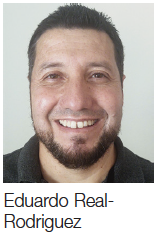
By Alicia Benjamin
Approximately 60 million Latinos live in the U.S., which represents 18.5% of the population, according to the latest U.S. Census Bureau statistics. In Charlotte, Latinos make up 14.3 percent of the population or about 133,000 people.
But in Charlotte-Mecklenburg Schools (CMS), where the Latino population is 27%, only 2.3% of the teachers are Latino, according to the 2020-21 CMS School Diversity Report.
“We need more Latino teachers in the classroom, because they understand the culture,” said Board of Education Vice-Chairperson Thelma Byers-Bailey. “Children need to see someone who looks like them,” she said. “They need role models. That is important. It’s essential.
Two teachers at Charlotte East Language Academy (CELA), a Spanish-immersion magnet school in East Charlotte with a 63% Hispanic student population, have some ideas about why it’s important for CMS to hire more Latino teachers and what some of the impediments are.
Luz Pachon Gonzalez, who is originally from Colombia, has been teaching for 25 years, including 11 years in the U.S. Gonzalez, currently a Spanish Immersion facilitator at CELA, said one reason CMS needs to hire more Latino teachers is because bilingual education will open more opportunities for students in when they become professionals.
“Spanish is becoming more relevant in the business world,” she said. “One of the objectives of education is to prepare our students for the world and part of that will be to prepare them to speak more than one language.”
Gonzalez said it makes her sad that many of the Latino students at CELA don’t speak much Spanish. “I want to open the eyes of the Latino parents who think if they don’t speak only English their children will suffer in this country.”
Many of the students’ family members struggled in the U.S. because they only spoke Spanish, Gonzalez said. “So, they want their children to only speak and learn English, she added. “They are killing the language at home. It hurts my heart when I speak to a Hispanic student and they say, ‘I don’t speak Spanish.’ We have to teach even our Hispanic population to see Spanish as a treasure and to value the language.” Eduardo Real-Rodriguez has been teaching for 21 years, including five years in the U.S. Real-Rodriguez, who is originally from Colombia, works as a Spanish immersion teacher at CELA. He and many of the teachers at the school were recruited by a cultural exchange agency that places and supports international teachers in U.S. schools.
Programs such as Educational Partners International are approved by the U.S. government and the North Carolina Department of Instruction and allow qualified international teachers to serve as educators in U.S. schools for up to five years. These agencies have recruited several teachers from Central and South America to work in CMS schools, Real-Rodriguez and Gonzalez said.
“People who decide to come through these programs are willing to share what we know and to give something to America,” Real-Rodriguez said. “Our main goal is not only academics. It’s also to support families, children and the whole community.”
The U.S. government should develop plans that would allow teachers from other countries to stay in the country longer so that they can have a greater impact at their assigned schools, Gonzalez said. Also, CMS should create more programs that encourage and support Latino high school students who show an interest in teaching, she said.
“I see myself as an important person because I really try to have a positive impact on all of the community,” Real-Rodriguez said. “One person told me that we are changing the course of the river,” he said. “It would be good for the Black students to see more Latinx teachers also,” Byers-Bailey said. “It’s important for them to see teachers of color putting on that professional hat. It would be good for everybody.”


